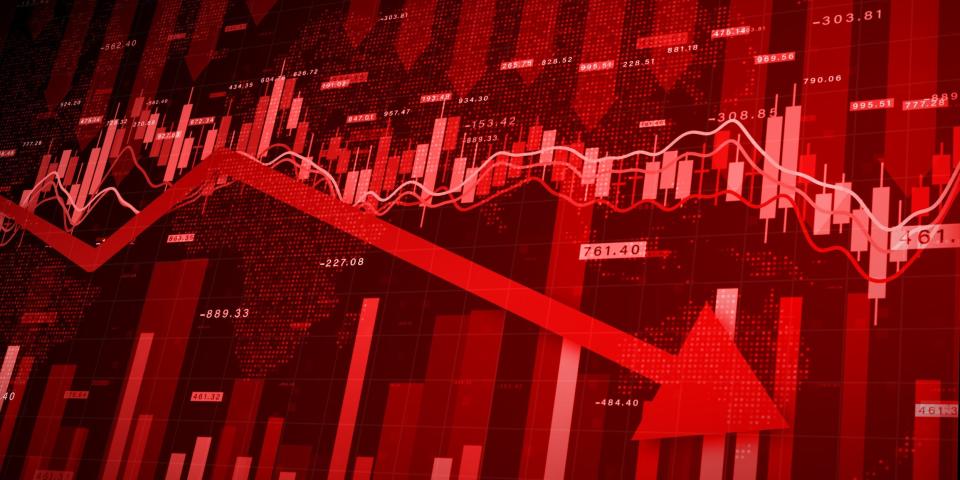Investors need to wait for a recession and accompanying rate cuts before putting more cash into stocks, Canaccord’s Tony Dwyer says.
He describes the US economy as a “zombie” that needs to be “killed” before a recovery can start.
Under such a scenario, the Fed would leave interest rates higher for longer to induce a downturn, then cut rates, Dwyer says.
The Fed needs to kill off the half-dead US economy by leaving rates higher for longer to induce a recession — and only then should investors put more cash in the market, according to Tony Dwyer, the chief market strategist of Canaccord Genuity.
Speaking to CNBC on Thursday, Dwyer pointed to signs of weakness flashing in the economy, with some forecasters warning a recession could be just around the corner. That’s actually good news for investors, Dwyer said, as a downturn is the buying opportunity investors need to wait for:
“You need to kill the zombie. And the zombie is an economy that you’re waiting for [a downturn] because of the inversion of the yield curve and the higher interest rates to slow down enough to go into a recession,” he said. “If you get lower inflation, and lower interest rates, and start to get scared about the unemployment rate going up, that sets the stage for that real early cycle recovery.”
Fed officials have raised interest rates 525 basis points to lower inflation, a move that threatens to overtighten the economy into a downturn.
A slew of weakening data points suggests a slowing economy. For instance, though the unemployment rate remained near a record low in February, that’s partly because the Bureau of Labor Statistics saw just a 27% response rate from companies in its last jobs report, Dwyer said, suggesting that hiring conditions were weaker than they seemed on paper.
Corporate earnings also look to be struggling, Dwyer said, given that most of the earnings growth seen in 2023 was attributable to the Magnificent Seven, a group of mega-cap tech stocks that soared on Wall Street’s enthusiasm for AI. Barring those seven stocks, earnings growth was negative in 2023 — and is estimated to be negative for the current quarter as well, he said, citing LSEG data.
And while stocks have notched a series of all-time highs this year, not all parts of the market are doing well. Small-cap stocks, for instance, haven’t performed nearly as well as the S&P 500, with the Russell 2000 up just 5.5% from levels at the start of the year.
A slowing economy could push the Fed to issue rate cuts — the monetary easing tool investors have been eagerly anticipating. Markets are largely expecting the Fed to cut rates by 75 basis points or more this year, according to the CME FedWatch tool.
“At this point, when you’re this overbought and this extreme to the upside, you just want to wait for a better opportunity, and in our view, that comes with worsening employment data that cuts rates, you worry about the economy — that’s when I want to go in,” Dwyer added.
Some Wall Street forecasters have warned interest rates could stay higher-for-longer as the Fed is looking to avoid a resurgence in inflation. But that would only spark a more serious recession for the economy, as growth is already slowing down, Dwyer warned.
While more economists have warmed up to the prospect of a soft landing, there’s still a decent chance the US will slip into recession in the next year. One economic indicator called the “full model” shows the economy has an 85% chance of recession in the next 12 months, the highest recession probability since the Great Financial Crisis. The New York Fed, meanwhile, is forecasting a 58% chance of a recession by February next year.
Read the original article on Business Insider
Credit: Source link




